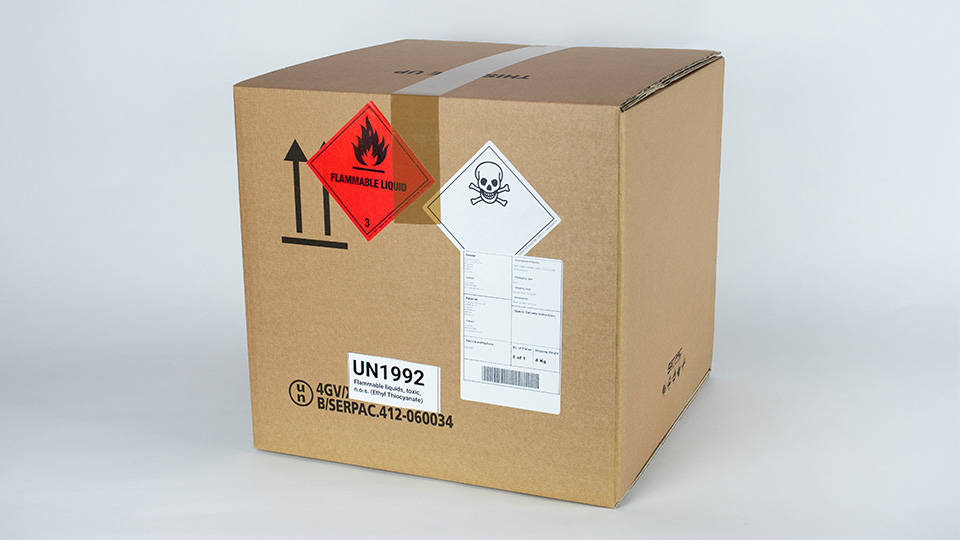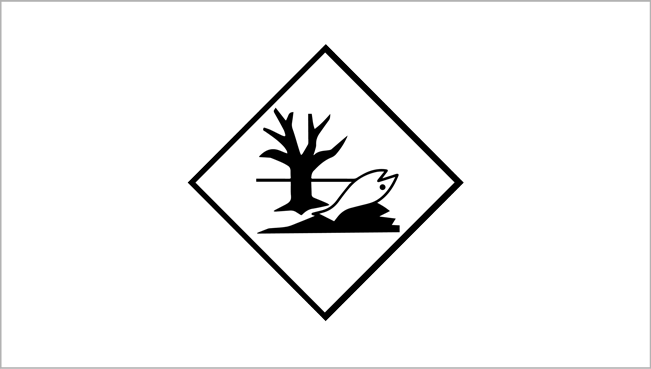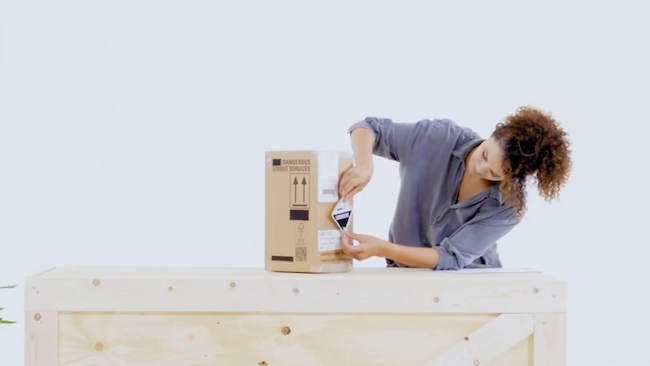How to mark and label dangerous goods shipments
Labeling and marking dangerous goods shipments correctly not only helps avoid delays or fines, but is also essential for preventing safety hazards. Remember to also check which laws and regulations apply, and your carrier’s requirements, before shipping.
Place all dangerous goods labels on one side of the box
Ensure all the dangerous goods labels and markings (printed information on the box) are on one side of the package. The labels must lie flat and not wrap around the edges of the package.
If the labels and markings don’t fit on one side, get a bigger box – according to IATA regulations all information related to the dangerous goods, including address details, must be on one side of the box. Only the orientation labels can be placed on a different side.



Right



Wrong
Check that all labels and markings are visible
The dangerous goods labels and other markings must be clearly visible and not covered by any tape, text, document pouches or other stickers.
Make sure the sender and receiver’s addresses are securely affixed to or marked on the box
The addresses of both shipper and receiver must be securely affixed to or durably printed or marked on the external surface of the package. Don’t put the addresses on a loose sheet of paper inside a pouch as it might get lost and your shipment may be stopped.



Right



Wrong
If a shipper's declaration for dangerous goods is required, make sure it's attached to the package
For many dangerous goods shipments a shipper's declaration for dangerous goods is required. To make sure the declaration doesn’t fall off the package, fold it and put it in a sturdy adhesive transparent pouch stuck to the outside.



Right



Wrong
Place dangerous goods labels in a diamond shape
The type of dangerous goods you’re shipping can be immediately identified by their diamond-shaped labels. So make sure you use the correct dangerous goods labels and affix them to the box in a diamond shape (set at an angle of 45°). If the labels don’t fit in a diamond shape, get a bigger box.



Right



Wrong
Make sure printed text and markings on boxes aren't covered
Product information and UN specification markings are often printed directly onto the cardboard boxes designed for the dangerous goods. So it’s important to keep these details clear from tape and any stickers.



Right



Wrong
Attach an environmental hazard label
If you’re shipping environmentally hazardous goods (with UN numbers UN 3082 or UN 3077), make sure you’ve attached the ‘dead tree dead fish’ label to the package – otherwise, you may be fined or your shipment may be delayed.



Dead tree dead fish label
Use orientation arrows when shipping liquids
If the shipment contains liquids, make sure you stick two arrow labels on two opposite sides of the package and make sure the package is the right way up.



Right



Wrong
Shipping requirements and documentation may vary between carriers. This website is designed to provide general information related to shipping. If you’re unsure of the shipping requirements that apply to you, check with your carrier. Make sure to check the rules and regulations of the country you’re shipping from and to prior to shipping. You can find this information on government websites.


